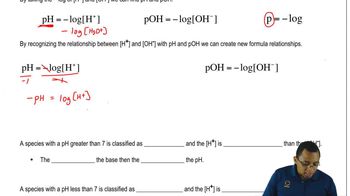Multiple Choice
Which of the following statements about aqueous solutions is/are true?
3527
views
2
rank
 Verified step by step guidance
Verified step by step guidance Verified video answer for a similar problem:
Verified video answer for a similar problem:



 1:31m
1:31mMaster The pH Scale Concept 1 with a bite sized video explanation from Jules
Start learning